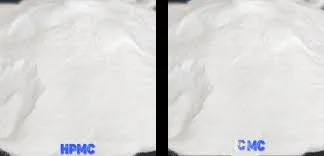
Dec . 21, 2024 08:28 Back to list
The Process of Producing Hydroxyethyl Cellulose in Industrial Applications
How is Hydroxyethyl Cellulose Made?
Hydroxyethyl cellulose (HEC) is a water-soluble polymer derived from cellulose, which is one of the most abundant natural polymers found in plants. HEC is widely used in various industries, including pharmaceuticals, cosmetics, food, and construction, due to its thickening, gelling, and stabilizing properties. The production process of hydroxyethyl cellulose involves several key steps, including purification of cellulose, etherification, and subsequent processing. This article will provide an overview of how hydroxyethyl cellulose is made, highlighting the critical stages of its production.
1. Source Material Cellulose
The production of hydroxyethyl cellulose starts with cellulose, which is typically sourced from wood pulp or cotton linters. These raw materials undergo a series of pretreatment processes to remove impurities such as lignin, hemicellulose, and other organic components. The purification process yields a high-quality cellulose powder, which serves as the starting material for the production of HEC. This cellulose must be in a finely powdered form to facilitate the subsequent chemical reactions.
2. Etherification Process
The purified cellulose then undergoes etherification, which is the core chemical reaction that transforms cellulose into hydroxyethyl cellulose. In this step, cellulose reacts with ethylene oxide, a crucial chemical reagent. The reaction typically occurs in an alkaline environment to activate the cellulose hydroxyl groups, making them more reactive.
During etherification, ethylene oxide attacks the hydroxyl groups of cellulose, introducing hydroxyethyl groups into the cellulose structure. This substitution process can be controlled by adjusting the reaction conditions such as temperature, pressure, and the ratio of ethylene oxide to cellulose. The degree of substitution (DS) is a critical parameter that defines the properties of the final HEC product. A higher DS generally leads to better solubility and thickening ability in water.
3. Neutralization and Purification
Once the etherification reaction is complete, the reaction mixture contains hydroxyethyl cellulose along with residual unreacted reactants and by-products. The next step is to neutralize any remaining alkali and remove excess ethylene oxide. This is usually done by adding an acid to the mixture, which helps to neutralize the alkaline environment and make the product safer for handling.
how is hydroxyethyl cellulose made

Following neutralization, the hydroxyethyl cellulose undergoes purification to remove any unreacted materials, salts, and other impurities. This stage may involve several processes such as filtration, centrifugation, and washing with solvents. The aim is to achieve a pure HEC product, which meets industry standards for quality and functionality.
4. Drying and Milling
After purification, the hydroxyethyl cellulose solution is concentrated and then dried to yield a solid product. Various drying techniques can be employed, including spray drying or drum drying, depending on the desired particle size and properties. The dried HEC is then milled to obtain a fine powder, which further enhances its usability in various applications.
5. Quality Control and Packaging
Prior to market release, the hydroxyethyl cellulose undergoes rigorous quality control testing to ensure it meets specific performance criteria such as viscosity, solubility, and degree of substitution. These tests are important for ensuring that the HEC will perform effectively in its intended applications, whether in thickening agents for cosmetics, binders in construction materials, or stabilizers in food products.
Once the quality tests are complete, the hydroxyethyl cellulose is packaged appropriately to preserve its quality during storage and transport. The final product is typically available in various grades and formulations, catering to the diverse needs of different industries.
Conclusion
In summary, the production of hydroxyethyl cellulose involves a complex interplay of chemical processes and meticulous quality control measures. From the initial purification of cellulose to the intricate etherification process and subsequent purification, each step is crucial in determining the properties and performance of the final product. As a versatile and essential polymer, hydroxyethyl cellulose continues to play a significant role across various sectors, highlighting the importance of understanding its production methods for those involved in relevant industries.
-
Versatile Hpmc Uses in Different Industries
NewsJun.19,2025
-
Redispersible Powder's Role in Enhancing Durability of Construction Products
NewsJun.19,2025
-
Hydroxyethyl Cellulose Applications Driving Green Industrial Processes
NewsJun.19,2025
-
Exploring Different Redispersible Polymer Powder
NewsJun.19,2025
-
Choosing the Right Mortar Bonding Agent
NewsJun.19,2025
-
Applications and Significance of China Hpmc in Modern Industries
NewsJun.19,2025







